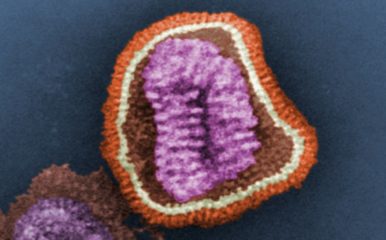
Rumours, COVID-19 and crisis in India’s poultry industry
Published on 23/03/2020

wokandapix/Pixabay
Amid the coronavirus pandemic in India, the poultry industry is headed for crisis, fuelled by misinformation and false rumours around the transmission of COVID-19.
It is estimated that the sector has incurred a loss of around Rs.70 billion after rumours and ‘fake news’ of chickens being infected with the coronavirus began doing the rounds on social media in mid-January. Losses are estimated at Rs. 10 billion a week.
Chicken culls
In January, farm gate chicken prices dropped by 50-60% as a result of these rumours, and every month farmers have been accumulating some 20-30% unsold inventory. In some places, where farmers are unable to handle huge inventories, have no place to keep unsold birds and cannot afford to feed them, panic sales have started. According to Sri. D. K. Kantharaju, the chairman of the Karnataka Co-operative Poultry Federation, it has become inevitable to cull poultry.
Egg producers, who were already under tremendous stress after losing around Rs.4.5 billion in 2019 due to higher prices associated with major poultry feed ingredients, lost Rs. 6 billion in February.
The poultry industry – worth Rs.1,750 billion in 2018 – is one of the fastest growing segments of the agricultural sector today in India, and one of the world’s largest producers of eggs and broiler meat. It has undergone a major shift in structure and operation over the past two decades, transforming from a backyard activity into a major industry with many integrated players. This transformation has involved a sizeable investment in breeding, hatching, rearing and processing activities.
While the production of crops has been rising at a rate of 1.5-2% per year, the production of eggs and broilers has been rising at a rate of 8-10%. More than 25 million farmers are in the poultry business. The poultry sector also plays a key role in providing nutritional security and employment. In India, people consume about 90 million (broiler) birds and 22.5 million eggs a week. The market is projected to reach Rs.4,340 billion by 2024.

Rumours and ‘fake news’
However, unsubstantiated ‘fake news’ and rumours are circulating on messaging platforms, with claims that the coronavirus could be transmitted via chicken. Research has shown that rumours travel faster and further than truth. Previously bird flu (avian influenza) hit the industry hard in 2006. But then the fears then were based upon facts. This is not the case in the current crisis.
Although there have been several outbreaks of various strains of bird flu since it emerged in Hong Kong in 1997, resulting in the culling of 1.5 million chickens, ducks and geese, these strains are not linked to COVID-19. As the American biologist Bruce Lipton has said in another context: “Fear of coronavirus was more deadly than the virus itself.”
Official communication
Nobody knows conclusively from which animal the novel coronavirus was transmitted to humans from, but what we do know is that transmission is now from human to human and no longer from animals. Nowhere in official reports has there been mention of chicken. Bats may well have been the species of origin, but this has yet to be proved, and scientists are cautious about concluding.
The Ministry of Fisheries, Animal Husbandry and Dairying’s Department of Animal Husbandry and Dairying has confirmed that the predominant route of the virus was human to human and that poultry had not been implicated in transmission. Similar messages and images from official sources, such as the Indian Veterinary Association, are circulating on social media and other channels stating that chicken is safe to eat.
Dissemination of correct information in various ways, such as texts (SMS), microblogs, news portals, cell phones, television, and oral communication, is important to re-assure both consumers and sellers.
The Prime Minister of India Narendra Modi has appealed: “I request people to not believe in hearsay and rumours on what to do and what not to do on coronavirus, whatever doubts you have please consult your doctor. Take advice from a doctor and do not be a doctor of your own.”
Food Safety and Standards Authority of India chief, G. S. G. Ayyangar, publicly asserted that there is no scientific evidence to show that the coronavirus spreads through eating chicken, mutton and seafood, and that the virus would not survive in higher temperature.
The Central and State Animal Husbandry Commission has also stepped in to dispel rumours after the poultry industry warned about a misinformation campaign.
However, the clarifications issued by the central and state animal husbandry commissions, the Ministry of Fisheries, Animal Husbandry and Dairying, the World Health Organization (WHO) and other credible bodies appear to have had no impact on the ground and have failed to put an end to people’s panic.
Scaling back production
Farmers have already resorted to countermeasures to reduce the losses. Breeder farmers have stopped producing fertile eggs, and eggs from breeder farms are being sold as table eggs. Broiler farmers have sold birds at a heavy loss and for the time being they have shut down activities.
Many farmers are scaling down their production as they cannot manage the costs of poultry feed, although the price of feed such as soybean and corn have also declined sharply in recent months. This could result in a meat shortage and price rises in the foreseeable future, even if the situation returns to normal, as raising the chicken population back to routine numbers could take weeks.
The poultry industry is the main consumer of soya and maize and so the crisis is impacting farmers growing these crops as well. In a few days this month, the price of maize dropped from Rs.25 to Rs.15 per kg. The skyrocketing price of maize and soya before the outbreak of COVID-19 were affecting the cost of production for egg producers.
To address peoples’ fears, awareness campaigns promoting chicken consumption are being organised, and these are well received. However, it is likely to take time for consumption levels to go back to ‘normal’.
Plenty of lessons will be learned from the outbreak in China and elsewhere as the virus spreads. However, what we should have learned a long time ago is that scare-mongering rarely does any good. In this particular case, misinformation may be depriving consumers of good nutrition precisely at a time when they may need it the most.


